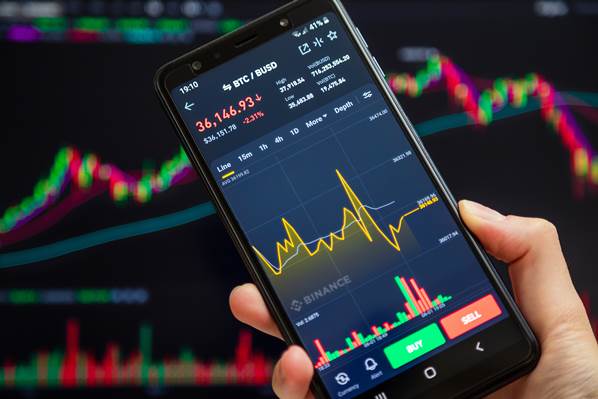
The NFT (Non-Fungible Token) market has grown into a multi-billion-dollar industry, transforming digital ownership and redefining how assets are traded.
NFTs represent unique digital assets stored on the blockchain, ensuring authenticity and scarcity. From digital art and collectibles to real estate and gaming items, NFTs have disrupted multiple industries, attracting investors, creators, and traders.
Despite their meteoric rise, the NFT market faces volatility, regulatory uncertainties, and concerns over sustainability. Understanding market trends, opportunities, and risks is crucial for traders looking to profit from NFT investments.
This article explores the NFT market landscape, its major sectors, key players, challenges, and the future of digital ownership.
What Are NFTs and How Do They Work?
Definition of NFTs
NFTs are unique digital assets that cannot be replaced or replicated. Unlike cryptocurrencies such as Bitcoin or Ethereum, which are fungible and interchangeable, each NFT holds a distinct value and ownership record.
How NFTs Function
- Blockchain Technology – NFTs are stored on blockchains like Ethereum, Solana, and Binance Smart Chain for security and transparency.
- Smart Contracts – Self-executing contracts enable royalties, automated transactions, and proof of ownership.
- Marketplaces – Platforms like OpenSea, Rarible, and LooksRare facilitate NFT buying and selling.
Example: An artist mints a one-of-a-kind digital painting as an NFT, ensuring the buyer has verifiable ownership and resale rights.
Major Sectors in the NFT Market
1. Digital Art and Collectibles
- Artists tokenize artwork to sell directly to collectors without intermediaries.
- Notable sales include Beeple’s $69 million NFT artwork at Christie’s auction.
2. Gaming and Virtual Assets
- Play-to-earn (P2E) games like Axie Infinity and The Sandbox integrate NFTs as in-game assets.
- Players own, trade, and monetize virtual land, characters, and items.
3. Music and Entertainment
- Musicians sell NFT albums, concert tickets, and exclusive content.
- Celebrities like Snoop Dogg and Kings of Leon have embraced NFT-based music releases.
4. Real Estate and Virtual Land
- Virtual worlds such as Decentraland and Otherside allow users to buy and trade NFT-based digital land.
- Real-world property transactions using NFT ownership verification are emerging.
Challenges Facing the NFT Market
1. Market Volatility
- NFT values fluctuate significantly, making them risky investments.
- Prices are often influenced by hype, speculation, and celebrity endorsements.
2. Scalability and Transaction Fees
- High Ethereum gas fees make NFT minting and transactions expensive.
- Layer 2 solutions like Polygon and Immutable X aim to reduce costs and increase speed.
3. Security and Scams
- NFT thefts, fake collections, and rug pulls are common in the industry.
- Investors should use verified marketplaces and conduct due diligence.
4. Regulatory Uncertainty
- Governments are considering taxation, copyright enforcement, and fraud prevention measures.
- Regulations may impact NFT trading and investment in different regions.
The Future of the NFT Market
- Integration with the Metaverse – NFTs will be central to digital economies in metaverse platforms.
- Mass Adoption – Major brands like Nike, Adidas, and Gucci are launching NFT initiatives.
- Institutional Interest – Venture capital firms and hedge funds are investing in NFT projects.
- New Use Cases – From ticketing and identity verification to tokenized luxury goods, NFTs will expand into more industries.
Example: Platforms like Quantum XBT are exploring NFT trading strategies and investment opportunities in this evolving market.
FAQ: Understanding the NFT Market
1. Are NFTs a good investment?
NFTs can be profitable, but their volatility makes them risky. It’s essential to research projects before investing.
2. Where can I buy NFTs?
You can purchase NFTs on OpenSea, Rarible, LooksRare, and Magic Eden using cryptocurrency.
3. What determines the value of an NFT?
NFT value depends on rarity, demand, utility, artist reputation, and market trends.
4. Can NFTs be stolen?
Yes, phishing scams and hacked wallets can lead to NFT theft. Always use secure wallets and platforms.
5. Do NFTs have real-world utility?
Yes, NFTs are used in gaming, real estate, music, digital identity, and the metaverse.
6. Are there risks in NFT trading?
- Market crashes can devalue assets.
- Fake collections and scams exist.
- Regulations may impact ownership rights.
7. What are the biggest NFT sales to date?
- Beeple’s Everydays – Sold for $69 million.
- CryptoPunk – Sold for $23 million.
- Bored Ape Yacht Club – Traded for millions.
8. How do I protect my NFT investments?
- Use hardware wallets for security.
- Avoid suspicious links and phishing scams.
- Trade on trusted platforms like Quantum XBT for safe NFT transactions.
Conclusion
The NFT market continues to evolve, offering opportunities for artists, gamers, investors, and collectors. With expanding use cases in entertainment, finance, and the metaverse, NFTs are set to play a vital role in the future of digital ownership.
However, investors must be cautious about volatility, security risks, and regulatory uncertainties. By conducting thorough research and using trusted platforms, traders can capitalize on the NFT boom while minimizing risks.
With platforms like Quantum XBT, traders can explore NFT investments, price trends, and market analytics to stay ahead in this fast-paced digital economy.




